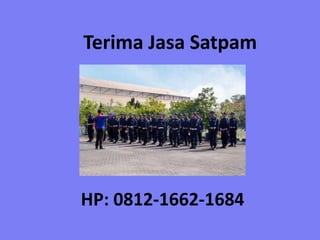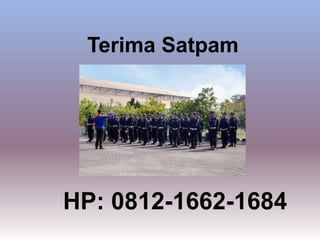Inorganic polymers
Download as pptx, pdf25 likes13,352 views
Explains briefly inorganic polymers which contain silicone, nitrogen, phosphorous and sulphur
1 of 30
Downloaded 312 times






























Ad
Recommended
Stobbe condensation
Stobbe condensation PRUTHVIRAJ K
Ã˝
The document discusses the Stobbe condensation, initially reported by Hans Stobbe in 1893, highlighting its mechanism, features, and synthetic applications. It describes how this reaction allows for the formation of unsaturated and saturated acids, as well as polycyclic ring systems. The document also includes references for further reading on the topic.Borazine
Borazine Einstein kannan
Ã˝
Borazine, also known as borazole, is an inorganic compound with the formula B3H6N3, analogous to benzene. It can be synthesized through various methods involving diborane and ammonia and has a volatile liquid form with distinct physical properties. Borazine has applications in ceramics and as a precursor for hexagonal boron nitride thin films, and can undergo various chemical reactions, including hydrolysis and polymerization.Classification of inorganic polymers by Dr. Salma Amir
Classification of inorganic polymers by Dr. Salma Amirsalmaamir2
Ã˝
The document discusses the classification of inorganic polymers. There are four main ways to classify inorganic polymers: (1) based on whether the backbone contains one element (homo-atomic) or multiple elements (hetero-atomic), (2) based on the type of reaction that forms the polymer such as condensation, addition, or coordination, (3) based on the number and type of bridging bonds between units, and (4) based on the main element that makes up the polymer such as boron, silicon, phosphorus, or sulfur. Examples are provided for common inorganic polymers that fall under each classification method.Silicone polymers structure, prepartion, properties, uses
Silicone polymers structure, prepartion, properties, uses Eswaran Murugesan
Ã˝
The document discusses silicone polymers, detailing their structure, preparation methods, properties, and uses. Silicone polymers, mainly composed of siloxane bonds, exhibit varying characteristics such as thermal and chemical stability, and find applications in products like silicone rubber and lubricants. Key preparation methods include hydrolysis of chlorosilanes, while properties such as water repellency and electrical insulation are highlighted.Mofs
Mofssadaf sayab
Ã˝
Metal organic frameworks (MOFs) are hybrid organic-inorganic compounds consisting of metal ions or clusters coordinated to organic ligands to form one, two, or three-dimensional structures. MOFs can be porous or non-porous. They are synthesized by combining metal ions with organic ligands like dicarboxylic acids. MOFs have applications in gas storage, carbon dioxide capture, catalysis, and selective gas adsorption due to their tunable porous structures and active metal sites.N heterocyclic carbenes
N heterocyclic carbenesBISWAJIT MORAN
Ã˝
N-heterocyclic carbenes (NHCs) are stable species containing a carbene carbon atom adjacent to at least one nitrogen atom in a ring structure. NHCs were first synthesized in the 1960s but were not isolated until 1991. They are stable due to inductive, mesomeric, and aromatic effects. NHCs are stronger sigma donors than phosphines and provide greater stability and reactivity to transition metal complexes. They have widespread applications as ligands in catalysis due to their tunable activities and stability in air and moisture.Ppt on OMC
Ppt on OMCZamir Shekh
Ã˝
This document discusses various types of organometallic compounds. It defines organometallic chemistry as the study of compounds with a carbon-metal bond. Key types discussed include organolithium, organomagnesium (Grignard reagents), organozinc, and organocopper compounds. The document also summarizes several important reactions of these compounds, such as addition reactions, cross-coupling reactions, and cyclopropanation.MOF, metal organic frameworks
MOF, metal organic frameworksSumanta Chakrabarty
Ã˝
The document discusses metal-organic frameworks (MOFs), a class of materials characterized by their porous structures which consist of metal ions coordinated to organic ligands. It highlights their significant properties, such as tunability, thermal stability, and potential applications in gas storage, catalysis, and energy storage. The synthesis methods and structural features of MOFs are also examined, emphasizing their importance in material science and engineering.Biological Applications & Environmental aspects of Organometallic Compounds
Biological Applications & Environmental aspects of Organometallic CompoundsRudreshMr
Ã˝
The document discusses the interdisciplinary field of bioorganometallic chemistry, emphasizing the biological applications and environmental aspects of organometallic compounds. It explores their use in medicine as drugs and chemotherapy agents, in agriculture as pesticides and growth regulators, and highlights the interactions of these compounds with the environment. Notable historical contributions from scientists like Paul Ehrlich and advancements in various organometallic applications are also reviewed.Polyphosphazenes... preparation and properties by Dr. Salma Amir
Polyphosphazenes... preparation and properties by Dr. Salma Amirsalmaamir2
Ã˝
This document discusses inorganic polymers called polyphosphazenes. It describes their general molecular structure as having an alternating phosphorus and nitrogen backbone with two organic side groups attached to each phosphorus atom. Over 700 types of polyphosphazenes have been synthesized with a wide range of physical and chemical properties. They are synthesized via ring opening polymerization or condensation polymerization of monomers. Polyphosphazenes have properties including flexibility, solubility, elasticity, and degradation rates that depend on the specific organic side groups. They can be modified and crosslinked for different applications.Carbenes .......
Carbenes .......keerthanan77
Ã˝
1. Carbenes are neutral molecules containing a divalent carbon atom with two unshared valence electrons. They exist in both singlet and triplet states depending on the electronic spin.
2. Carbenes undergo insertion reactions into X-H and C-C bonds. They also add across double bonds, with singlet carbenes preserving alkene stereochemistry and triplet carbenes losing it.
3. Carbenes are generated by reactions such as α-elimination of halogenated compounds with base or decomposition of diazo compounds. They can rearrange through migrations such as the Wolff or Arndt-Eistert reactions.Coordination polymers
Coordination polymerssruthinit
Ã˝
Coordination polymers are inorganic or organometallic polymers with repeating metal cation centers linked by organic ligands. They can extend in 1, 2, or 3 dimensions based on the metal's coordination number and geometry. Coordination polymers have many potential applications due to their tunable structures and properties. They are synthesized through self-assembly of metal salts and ligands, and their structures can be classified based on dimensionality and other factors. Important applications of coordination polymers include dyes, molecular storage, luminescence, electrical conductivity, and magnetism.∫›∫›fl£ share version solgel method
∫›∫›fl£ share version solgel methodUniversity of Karachi
Ã˝
The sol gel method is a process for synthesizing nanoparticles that involves dissolving a compound in a liquid to bring it back as a solid in a controlled manner. It allows mixing at an atomic level and results in small, easily sinterable particles. The key steps are hydrolysis and condensation of precursor molecules to form a sol, which then undergoes gelation and aging before drying to form the final product. The method offers advantages like precise size control and doping but is also substrate dependent and time consuming.Chemistry zimsec chapter 13 nitrogen and sulfur
Chemistry zimsec chapter 13 nitrogen and sulfuralproelearning
Ã˝
Chapter 13 discusses nitrogen and sulfur compounds, focusing on their properties, reactions, and environmental impacts. Key topics include the Haber process for ammonia production, the consequences of nitrate fertilizers leading to eutrophication, and the formation of acidic pollutants like sulfur dioxide. Additionally, it outlines the industrial use of nitrogen-derived compounds and the production of sulfuric acid via the contact process.BORAZINE- structure, preparation and properties
BORAZINE- structure, preparation and propertiesMn2555
Ã˝
1. Borazine is called inorganic benzene because it has a planar hexagonal structure like benzene with alternating B and N atoms.
2. Borazine undergoes addition reactions readily unlike benzene due to the polarity in its B-N bonds from the difference in electronegativity between B and N atoms.
3. Borazine can be synthesized in the laboratory by heating a mixture of LiBH4 and NH4Cl in vacuum at 230°C, which yields 30% borazine.Inorganic materials 2019
Inorganic materials 2019Chris Sonntag
Ã˝
1. Metals form solid states where the atomic orbitals overlap to form continuous bands of energy levels that allow electrons to move freely. This gives metals their conductive properties.
2. Semiconductors have a small band gap between the valence and conduction bands. Adding small amounts of impurities can increase or decrease conductivity by introducing more charge carriers.
3. Metal oxides and metal-organic frameworks use different structures and bonding to exhibit properties like magnetism, photocatalysis and gas storage that depend on their electronic band structures.Phase transfer catalyst
Phase transfer catalystVishakha Giradkar
Ã˝
Phase-transfer catalysts facilitate the transfer of reactants between immiscible liquid phases, allowing reactions to occur. They are commonly used quaternary ammonium or phosphonium salts. The catalyst transports one reactant from the aqueous phase to the organic phase where it can undergo a nucleophilic substitution reaction. This allows reactions to be carried out using cheaper and more environmentally friendly reagents like NaOH instead of organic solvents. Phase-transfer catalysis finds applications in industries like pharmaceuticals, perfumes, polymers, and pesticides by enabling mild reaction conditions.Supramolecular chemistry
Supramolecular chemistry JayamadhuriPantula
Ã˝
The document discusses supramolecular chemistry, which focuses on noncovalent interactions between molecules, contrasting with traditional molecular chemistry based on covalent bonds. It outlines various types of noncovalent interactions such as hydrogen bonding, ion-ion and cation-π interactions, as well as molecular receptors like endo- and exoreceptors that play critical roles in molecular recognition and assembly. Additionally, it highlights the applications of these interactions in organic compounds and materials science, demonstrating their significance in areas like pharmaceuticals and catalysis.Selection rules for soectroscopic transitions
Selection rules for soectroscopic transitionsRukhsarLatif1
Ã˝
This document discusses selection rules and photochemistry concepts. It describes three main selection rules that govern transitions in complex metal ions: spin selection rules, orbital selection rules, and Laporte selection rules. Spin selection rules state that transitions can only occur between states of the same spin and multiplicity. Orbital selection rules indicate that d-d transitions are usually forbidden but can be partially allowed. Laporte selection rules are based on parity and state that transitions between states of the same parity are forbidden. The document also discusses the Franck-Condon principle and provides an abstract on photochemistry occurring on particulate matter and within liquid droplets.Applications of organometallic compounds
Applications of organometallic compoundsPriyanka Jaiswal
Ã˝
This document provides an overview of catalysis by organometallic compounds. It discusses that organometallic compounds are widely used as homogeneous catalysts in industrial processes and research. Nobel Prizes have been awarded for discoveries in organometallic chemistry and homogeneous catalysis. Examples of important organometallic catalysts discussed include Wilkinson's catalyst, Noyori's catalyst for asymmetric hydrogenation, and Ziegler-Natta catalysts for polymerization of olefins. The mechanisms of homogeneous hydrogenation and different types of catalysis such as homogeneous versus heterogeneous are also summarized.Kinetics of solution in reaction
Kinetics of solution in reactionSaiva Bhanu Kshatriya College, Aruppukottai.
Ã˝
The document discusses the kinetics of reactions in solution, detailing the mechanisms, effects of solvent dielectric constants, and the impact of ionic strength and pressure on reaction rates. It elaborates on primary and secondary salt effects, describing how reactants interact and the role of the activated complex in influencing reaction kinetics. Additionally, it presents equations that mathematically represent these relationships and their implications for reaction dynamics.Organoborane or Organoboron compounds
Organoborane or Organoboron compoundsDr. Krishna Swamy. G
Ã˝
Organoborane chemistry deals with organoboron compounds that contain carbon-boron bonds. Key reactions of organoboranes include hydroboration of alkenes, oxidation of organoboranes to alcohols, isomerization of organoboranes at high temperatures, protonolysis with carboxylic acids, and carbonylation with carbon monoxide. Carbonylation can produce aldehydes, ketones, or alcohols depending on reaction conditions and presence of migrating groups.supramolecues and charge transfer complexes
supramolecues and charge transfer complexesHimanshu Asati
Ã˝
The document discusses supramolecular chemistry, focusing on the formation and interaction of supermolecules through intermolecular forces such as hydrogen bonding and ion-dipole interactions. It explores various types of supramolecules, including crown ethers, calixarenes, and cyclodextrins, highlighting their structures, classifications, and applications in fields like drug delivery, molecular sensing, and catalysis. Additionally, it covers host-guest chemistry and represents various methodologies for molecular assembly and recognition.Silicon
SiliconArjun K Gopi
Ã˝
This document provides an overview of silicones, including their manufacturing, properties, applications, and role in various industries. Silicones are polymers derived from silicon and oxygen, and can be manufactured in many forms including fluids, elastomers, and resins. They have properties like thermal stability, flexibility, and resistance to chemicals, UV rays, and mold/microbes. Major applications of silicones include construction, transportation, personal care products, and industrial manufacturing. Within these industries, silicones play an important role by enabling energy efficiency and durable, high-performance materials.Polymerization
PolymerizationUsman Shah
Ã˝
This document provides an introduction to polymers. Polymers are macromolecules formed by linking many smaller molecules called monomers through a process called polymerization. Polymers can be classified based on their structure as linear, branched or cross-linked. Polymerization occurs through either addition or condensation reactions. Addition polymers are formed without the loss of small molecules, while condensation polymers are formed with the loss of small molecules like water or ammonia. Common examples of addition and condensation polymers are also provided.MoFs (METAL-ORGANIC FRAMEWORKS)
MoFs (METAL-ORGANIC FRAMEWORKS)mahsaehsani
Ã˝
Metal-organic frameworks (MOFs) are a versatile class of advanced materials consisting of metal clusters connected by organic ligands to form crystalline porous structures. MOFs have tunable properties depending on the metal ions and ligands used, and high surface areas and pore volumes making them promising for applications in gas storage, separation, catalysis, and sensing. The document provides an overview of MOF structure and synthesis methods, and discusses some common ligands and metal centers used as well as properties and applications of MOFs.Chromium group.
Chromium group. raghad_m9
Ã˝
Chromium, molybdenum, and tungsten are transition metals that share several properties. They have high melting points and are relatively inert. Chromium forms protective oxide coatings and is used to make stainless steel. Molybdenum and tungsten can form a variety of oxidation states and complexes, including clusters. Notable compounds include chromates, molybdates, tungstates, and heteropolyacids containing combinations of these elements. The metals have various industrial uses related to their hardness and corrosion resistance.Polymer supported Synthesis
Polymer supported Synthesis Minal Saini , student of Chaudhary bansilal University , Bhiwani, Haryana
Ã˝
The document discusses polymer-supported synthesis in solid-phase peptide synthesis, highlighting the benefits such as improved reaction yields and simpler purification steps. It outlines properties of polymer supports, their types, and examples of reactions that utilize these supports, emphasizing the advantages of using polymers like polystyrene as catalysts. The conclusion reinforces that polymer materials enhance isolation and purification processes in organic synthesis.5 cosmetics
5 cosmeticsManju Sebastian
Ã˝
This document discusses hair colourants and their classification into temporary, semi-permanent, demi-permanent, and permanent types. It notes potential health effects like allergic reactions and carcinogenic compounds from permanent hair dyes. It also discusses the composition and health concerns of talcum powder, fragrances, and deodorants, including potential carcinogens and allergens contained within these products.8 cement and glass
8 cement and glassManju Sebastian
Ã˝
The document discusses the composition and production processes of cement and various types of glass, including their raw materials and characteristics. Cement is made from a mixture of calcium silicate and aluminate, which hardens when mixed with water, while glass can be produced from silicates and comes in many forms, including ordinary and borosilicate glass. Specific glass types are noted for their applications in optical instruments, cookware, and safety features.More Related Content
What's hot (20)
Biological Applications & Environmental aspects of Organometallic Compounds
Biological Applications & Environmental aspects of Organometallic CompoundsRudreshMr
Ã˝
The document discusses the interdisciplinary field of bioorganometallic chemistry, emphasizing the biological applications and environmental aspects of organometallic compounds. It explores their use in medicine as drugs and chemotherapy agents, in agriculture as pesticides and growth regulators, and highlights the interactions of these compounds with the environment. Notable historical contributions from scientists like Paul Ehrlich and advancements in various organometallic applications are also reviewed.Polyphosphazenes... preparation and properties by Dr. Salma Amir
Polyphosphazenes... preparation and properties by Dr. Salma Amirsalmaamir2
Ã˝
This document discusses inorganic polymers called polyphosphazenes. It describes their general molecular structure as having an alternating phosphorus and nitrogen backbone with two organic side groups attached to each phosphorus atom. Over 700 types of polyphosphazenes have been synthesized with a wide range of physical and chemical properties. They are synthesized via ring opening polymerization or condensation polymerization of monomers. Polyphosphazenes have properties including flexibility, solubility, elasticity, and degradation rates that depend on the specific organic side groups. They can be modified and crosslinked for different applications.Carbenes .......
Carbenes .......keerthanan77
Ã˝
1. Carbenes are neutral molecules containing a divalent carbon atom with two unshared valence electrons. They exist in both singlet and triplet states depending on the electronic spin.
2. Carbenes undergo insertion reactions into X-H and C-C bonds. They also add across double bonds, with singlet carbenes preserving alkene stereochemistry and triplet carbenes losing it.
3. Carbenes are generated by reactions such as α-elimination of halogenated compounds with base or decomposition of diazo compounds. They can rearrange through migrations such as the Wolff or Arndt-Eistert reactions.Coordination polymers
Coordination polymerssruthinit
Ã˝
Coordination polymers are inorganic or organometallic polymers with repeating metal cation centers linked by organic ligands. They can extend in 1, 2, or 3 dimensions based on the metal's coordination number and geometry. Coordination polymers have many potential applications due to their tunable structures and properties. They are synthesized through self-assembly of metal salts and ligands, and their structures can be classified based on dimensionality and other factors. Important applications of coordination polymers include dyes, molecular storage, luminescence, electrical conductivity, and magnetism.∫›∫›fl£ share version solgel method
∫›∫›fl£ share version solgel methodUniversity of Karachi
Ã˝
The sol gel method is a process for synthesizing nanoparticles that involves dissolving a compound in a liquid to bring it back as a solid in a controlled manner. It allows mixing at an atomic level and results in small, easily sinterable particles. The key steps are hydrolysis and condensation of precursor molecules to form a sol, which then undergoes gelation and aging before drying to form the final product. The method offers advantages like precise size control and doping but is also substrate dependent and time consuming.Chemistry zimsec chapter 13 nitrogen and sulfur
Chemistry zimsec chapter 13 nitrogen and sulfuralproelearning
Ã˝
Chapter 13 discusses nitrogen and sulfur compounds, focusing on their properties, reactions, and environmental impacts. Key topics include the Haber process for ammonia production, the consequences of nitrate fertilizers leading to eutrophication, and the formation of acidic pollutants like sulfur dioxide. Additionally, it outlines the industrial use of nitrogen-derived compounds and the production of sulfuric acid via the contact process.BORAZINE- structure, preparation and properties
BORAZINE- structure, preparation and propertiesMn2555
Ã˝
1. Borazine is called inorganic benzene because it has a planar hexagonal structure like benzene with alternating B and N atoms.
2. Borazine undergoes addition reactions readily unlike benzene due to the polarity in its B-N bonds from the difference in electronegativity between B and N atoms.
3. Borazine can be synthesized in the laboratory by heating a mixture of LiBH4 and NH4Cl in vacuum at 230°C, which yields 30% borazine.Inorganic materials 2019
Inorganic materials 2019Chris Sonntag
Ã˝
1. Metals form solid states where the atomic orbitals overlap to form continuous bands of energy levels that allow electrons to move freely. This gives metals their conductive properties.
2. Semiconductors have a small band gap between the valence and conduction bands. Adding small amounts of impurities can increase or decrease conductivity by introducing more charge carriers.
3. Metal oxides and metal-organic frameworks use different structures and bonding to exhibit properties like magnetism, photocatalysis and gas storage that depend on their electronic band structures.Phase transfer catalyst
Phase transfer catalystVishakha Giradkar
Ã˝
Phase-transfer catalysts facilitate the transfer of reactants between immiscible liquid phases, allowing reactions to occur. They are commonly used quaternary ammonium or phosphonium salts. The catalyst transports one reactant from the aqueous phase to the organic phase where it can undergo a nucleophilic substitution reaction. This allows reactions to be carried out using cheaper and more environmentally friendly reagents like NaOH instead of organic solvents. Phase-transfer catalysis finds applications in industries like pharmaceuticals, perfumes, polymers, and pesticides by enabling mild reaction conditions.Supramolecular chemistry
Supramolecular chemistry JayamadhuriPantula
Ã˝
The document discusses supramolecular chemistry, which focuses on noncovalent interactions between molecules, contrasting with traditional molecular chemistry based on covalent bonds. It outlines various types of noncovalent interactions such as hydrogen bonding, ion-ion and cation-π interactions, as well as molecular receptors like endo- and exoreceptors that play critical roles in molecular recognition and assembly. Additionally, it highlights the applications of these interactions in organic compounds and materials science, demonstrating their significance in areas like pharmaceuticals and catalysis.Selection rules for soectroscopic transitions
Selection rules for soectroscopic transitionsRukhsarLatif1
Ã˝
This document discusses selection rules and photochemistry concepts. It describes three main selection rules that govern transitions in complex metal ions: spin selection rules, orbital selection rules, and Laporte selection rules. Spin selection rules state that transitions can only occur between states of the same spin and multiplicity. Orbital selection rules indicate that d-d transitions are usually forbidden but can be partially allowed. Laporte selection rules are based on parity and state that transitions between states of the same parity are forbidden. The document also discusses the Franck-Condon principle and provides an abstract on photochemistry occurring on particulate matter and within liquid droplets.Applications of organometallic compounds
Applications of organometallic compoundsPriyanka Jaiswal
Ã˝
This document provides an overview of catalysis by organometallic compounds. It discusses that organometallic compounds are widely used as homogeneous catalysts in industrial processes and research. Nobel Prizes have been awarded for discoveries in organometallic chemistry and homogeneous catalysis. Examples of important organometallic catalysts discussed include Wilkinson's catalyst, Noyori's catalyst for asymmetric hydrogenation, and Ziegler-Natta catalysts for polymerization of olefins. The mechanisms of homogeneous hydrogenation and different types of catalysis such as homogeneous versus heterogeneous are also summarized.Kinetics of solution in reaction
Kinetics of solution in reactionSaiva Bhanu Kshatriya College, Aruppukottai.
Ã˝
The document discusses the kinetics of reactions in solution, detailing the mechanisms, effects of solvent dielectric constants, and the impact of ionic strength and pressure on reaction rates. It elaborates on primary and secondary salt effects, describing how reactants interact and the role of the activated complex in influencing reaction kinetics. Additionally, it presents equations that mathematically represent these relationships and their implications for reaction dynamics.Organoborane or Organoboron compounds
Organoborane or Organoboron compoundsDr. Krishna Swamy. G
Ã˝
Organoborane chemistry deals with organoboron compounds that contain carbon-boron bonds. Key reactions of organoboranes include hydroboration of alkenes, oxidation of organoboranes to alcohols, isomerization of organoboranes at high temperatures, protonolysis with carboxylic acids, and carbonylation with carbon monoxide. Carbonylation can produce aldehydes, ketones, or alcohols depending on reaction conditions and presence of migrating groups.supramolecues and charge transfer complexes
supramolecues and charge transfer complexesHimanshu Asati
Ã˝
The document discusses supramolecular chemistry, focusing on the formation and interaction of supermolecules through intermolecular forces such as hydrogen bonding and ion-dipole interactions. It explores various types of supramolecules, including crown ethers, calixarenes, and cyclodextrins, highlighting their structures, classifications, and applications in fields like drug delivery, molecular sensing, and catalysis. Additionally, it covers host-guest chemistry and represents various methodologies for molecular assembly and recognition.Silicon
SiliconArjun K Gopi
Ã˝
This document provides an overview of silicones, including their manufacturing, properties, applications, and role in various industries. Silicones are polymers derived from silicon and oxygen, and can be manufactured in many forms including fluids, elastomers, and resins. They have properties like thermal stability, flexibility, and resistance to chemicals, UV rays, and mold/microbes. Major applications of silicones include construction, transportation, personal care products, and industrial manufacturing. Within these industries, silicones play an important role by enabling energy efficiency and durable, high-performance materials.Polymerization
PolymerizationUsman Shah
Ã˝
This document provides an introduction to polymers. Polymers are macromolecules formed by linking many smaller molecules called monomers through a process called polymerization. Polymers can be classified based on their structure as linear, branched or cross-linked. Polymerization occurs through either addition or condensation reactions. Addition polymers are formed without the loss of small molecules, while condensation polymers are formed with the loss of small molecules like water or ammonia. Common examples of addition and condensation polymers are also provided.MoFs (METAL-ORGANIC FRAMEWORKS)
MoFs (METAL-ORGANIC FRAMEWORKS)mahsaehsani
Ã˝
Metal-organic frameworks (MOFs) are a versatile class of advanced materials consisting of metal clusters connected by organic ligands to form crystalline porous structures. MOFs have tunable properties depending on the metal ions and ligands used, and high surface areas and pore volumes making them promising for applications in gas storage, separation, catalysis, and sensing. The document provides an overview of MOF structure and synthesis methods, and discusses some common ligands and metal centers used as well as properties and applications of MOFs.Chromium group.
Chromium group. raghad_m9
Ã˝
Chromium, molybdenum, and tungsten are transition metals that share several properties. They have high melting points and are relatively inert. Chromium forms protective oxide coatings and is used to make stainless steel. Molybdenum and tungsten can form a variety of oxidation states and complexes, including clusters. Notable compounds include chromates, molybdates, tungstates, and heteropolyacids containing combinations of these elements. The metals have various industrial uses related to their hardness and corrosion resistance.Polymer supported Synthesis
Polymer supported Synthesis Minal Saini , student of Chaudhary bansilal University , Bhiwani, Haryana
Ã˝
The document discusses polymer-supported synthesis in solid-phase peptide synthesis, highlighting the benefits such as improved reaction yields and simpler purification steps. It outlines properties of polymer supports, their types, and examples of reactions that utilize these supports, emphasizing the advantages of using polymers like polystyrene as catalysts. The conclusion reinforces that polymer materials enhance isolation and purification processes in organic synthesis.Polymer supported Synthesis
Polymer supported Synthesis Minal Saini , student of Chaudhary bansilal University , Bhiwani, Haryana
Ã˝
More from Manju Sebastian (12)
5 cosmetics
5 cosmeticsManju Sebastian
Ã˝
This document discusses hair colourants and their classification into temporary, semi-permanent, demi-permanent, and permanent types. It notes potential health effects like allergic reactions and carcinogenic compounds from permanent hair dyes. It also discusses the composition and health concerns of talcum powder, fragrances, and deodorants, including potential carcinogens and allergens contained within these products.8 cement and glass
8 cement and glassManju Sebastian
Ã˝
The document discusses the composition and production processes of cement and various types of glass, including their raw materials and characteristics. Cement is made from a mixture of calcium silicate and aluminate, which hardens when mixed with water, while glass can be produced from silicates and comes in many forms, including ordinary and borosilicate glass. Specific glass types are noted for their applications in optical instruments, cookware, and safety features.7 agricultural chemicals
7 agricultural chemicalsManju Sebastian
Ã˝
The document details essential plant nutrients, categorizing them into mineral (macronutrients and micronutrients) and non-mineral nutrients, and describes various fertilizers (natural and artificial) used to supply these nutrients. It also covers different types of fertilizers, pesticides (insecticides, herbicides, rodenticides, fungicides), and highlights environmental hazards and toxicity associated with these chemicals. The summary emphasizes the significance of chemical fertilizers and pesticides in agriculture while pointing out their potential negative impacts on the environment and health.6 chemicals in food
6 chemicals in foodManju Sebastian
Ã˝
The document discusses various food preservation methods and additives, including preservatives, artificial sweeteners, antioxidants, and food colors, highlighting their roles in enhancing flavor, maintaining nutritional quality, and extending shelf life. It emphasizes the potential health risks associated with fast and junk food, along with the benefits of milk and coconut water as nutritious options. Additionally, it covers the methods for ripening fruits and the nutritional advantages of neera, a natural beverage.4 cleansing agents
4 cleansing agentsManju Sebastian
Ã˝
Soaps are sodium and potassium salts of long-chain carboxylic acids, made through saponification of fats with NaOH, and have eco-friendly properties but poor cleansing in hard water. Detergents, derived from petroleum, have stronger cleaning power and are effective in hard water, though they are less biodegradable and can harm aquatic life. The main distinction is that soaps create scum in hard water while detergents do not.3 dyes
3 dyesManju Sebastian
Ã˝
Dyes are coloured organic compounds that can impart their colour to other substances. To be an effective dye, a compound must have a suitable colour, be capable of firmly binding to fibers, and retain its colour after binding. It should also be stable during dry cleaning. Common dyes include malachite green, orange dyes, alizarin, martius yellow, indigo, congo red, quercetin, and para red. The chromophore is responsible for colour and contains an unsaturated group, while auxochromes intensify colour. Resonance contributes to dye colour by allowing pi electrons to absorb radiation. Dyes find applications in silk, wool, synthetic fibers, biological staining, indicators, and food colouring1 chemistry in daily life 1 petrochemicals
1 chemistry in daily life 1 petrochemicalsManju Sebastian
Ã˝
The document provides an overview of petroleum refining and petrochemicals, discussing essential components like octane and cetane numbers, flash points, and the processes involved in refining crude oil. It details various products derived from petroleum, such as gasoline and lubricating oil, as well as the characteristics and uses of liquefied petroleum gas (LPG) and compressed natural gas (CNG). Additionally, it explores the catalytic cracking process for maximizing the value of petroleum fractions.2 pharmaceuticals
2 pharmaceuticalsManju Sebastian
Ã˝
The document provides an overview of various types of drugs, categorizing them as over-the-counter and prescription medications, and describes their biological responses. It details different classes of drugs including analgesics, antibiotics, antiseptics, and tranquilizers, along with examples for each type. Additionally, it highlights the roles of prodrugs and the mechanisms through which they become active in the body.Colloids
ColloidsManju Sebastian
Ã˝
1) Colloids have particle sizes between 1-100 nm, are heterogeneous systems that cannot be filtered or separated by centrifugation, and include sols, emulsions, and gels.
2) Sols are dispersions where the dispersed phase is a solid and the dispersion medium is a liquid. They can be lyophilic or lyophobic.
3) Emulsions are dispersions where both phases are liquids, existing as oil-in-water or water-in-oil forms. Gels have a solid dispersion medium and liquid dispersed phase.
4) Colloids exhibit unique optical, kinetic, and electrical properties due to their intermediate size, including Tyndall effect, BrownianOrganometallic Chemistry
Organometallic ChemistryManju Sebastian
Ã˝
This document discusses organometallic chemistry and is presented by Dr. Manju Sebastian. It describes the classification of organometallic compounds based on the type of metal-carbon bond formed. The classifications include ionic compounds, compounds with sigma bonds, compounds with pi bonds, and compounds with multicenter bonds. Examples are provided for each classification. Additional topics covered include carbonyl complexes, ferrocene, applications of organometallics as catalysts including the Ziegler-Natta and Wilkinson catalysts.Some industrially important inorganic materials
Some industrially important inorganic materialsManju Sebastian
Ã˝
Selenium is used in xerography due to its photoconductive properties. In the xerographic process, a latent electrostatic image is formed on a selenium-coated plate when exposed to light from an image. This latent image is then developed using toner particles to make the image visible, after which it is transferred to paper. Refractory materials like carbides and borides are used in high-temperature applications due to their hardness and melting points over 2000°C. Carbides include salt-like, covalent and interstitial types. Borides can have isolated boron atoms, chains of boron, or extensive boron networks. Ceramics include traditional clay products and advanced ceramics used inCatalysis
CatalysisManju Sebastian
Ã˝
This document discusses catalysis and provides an overview of the key concepts:
- A catalyst accelerates a chemical reaction by lowering the activation energy without being consumed in the reaction.
- Catalysts have properties such as an optimal temperature and can be poisoned. They also exhibit selectivity.
- There are two main types of catalysis: homogeneous where reactants and catalysts are in the same phase, and heterogeneous where they are in different phases.
- Theories of catalysis include the intermediate compound formation theory for homogeneous catalysis and the adsorption theory for heterogeneous catalysis.
- Enzyme catalysis is a type of biocatalysis where enzymes act as biological catalysts through mechanisms like specifically binding substrates.Ad
Inorganic polymers
- 2. HP: 0812-1662-1684 Terima jasa Security
- 4. Terima Jasa Security HP: 0812-1662-1684
- 15. Terima Jasa Security HP: 0812-1662-1684
- 17. Terima Jasa Security HP: 0812-1662-1684
- 18. Terima Jasa Satpam HP: 0812-1662-1684
- 20. Terima Jasa Security HP: 0812-1662-1684
- 21. Terima Jasa Security HP: 0812-1662-1684
- 23. Terima jasa Satpam HP: 0812-1662-1684
- 29. Jasa Keamanan Kantor HP: 0812-1662-1684
- 30. Terima Jasa Keamanan HP: 0812-1662-1684